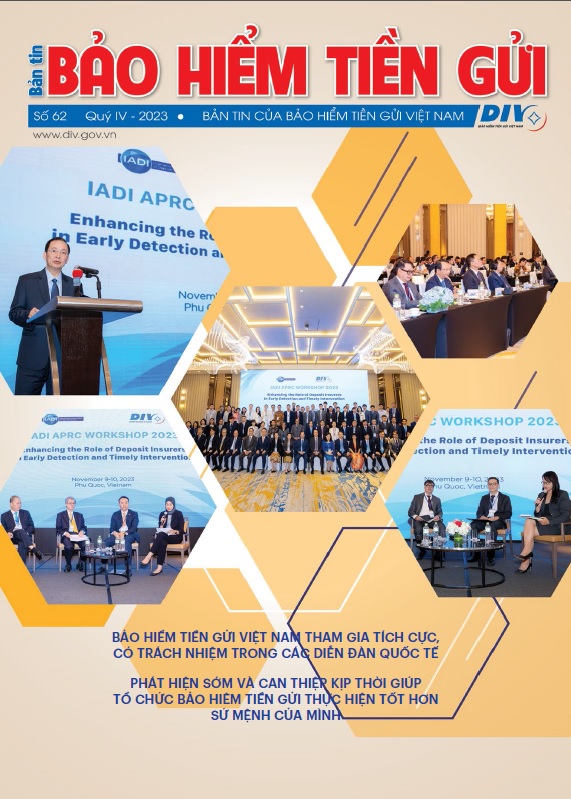The banking industry invests heavily in digital transformation and human resources
According to the Banking Industry Digital Transformation Plan to 2025, with a vision to 2030, credit institutions and foreign bank branches will have at least 50% of banking operations allowing customers to perform completely on the digital environment. In digital markets, at least 50% of adults use electronic payment services and at least 70% of customers' transactions are made through digital channels. The basic goal is that by 2030, credit institutions will have at least 70% of banking operations that allow customers to perform completely in the digital environment.
From a market perspective, even small-scale credit institutions are feeling the pressure of lagging behind and narrowing the playing field without proper investment strategies in digital transformation. KPMG - a company specializing in providing audit, tax and legal consulting services - said that credit institutions are pursuing different options, with banks choosing to provide digital services on existing platforms. There are also banks that pursue the independent model by creating a new brand that provides financial services - digital banking independent of the existing brand and system. Either way, the biggest challenge is getting people with new skills and new mindsets. On the one hand, credit institutions still need to maintain the current business activities (running the bank). On the other hand, they need to build a new resource to promote the implementation of exchange initiatives (change the bank). Therefore, the trend of focusing investment budget on digital training and innovating resource management methods, focusing on welfare, mental health, flexible working model... are priority items of the bank.
Although the digital transformation process is somewhat slower than the world, the system of credit institutions in Vietnam, with great potential, has made many strides in the digital transformation process in recent years. A survey by the State Bank of Vietnam shows that up to 95% of credit institutions have, are developing or are planning to develop a digital transformation strategy. Particularly in 2022, non-cash payment transactions recorded an increase of more than 85.6% in quantity and over 31.39% in value. In which, transactions via mobile phone channel increased by more than 116.1% and over 92.3% respectively; via QR code method increased 182.5% and 210.6% respectively, showing the boom of the digital banking market. Many new and modern technologies such as artificial intelligence (AI), blockchain technology (Blockchain), automation, big data... have been applied to many areas of activity.
The percentage of Vietnamese people accessing the internet (about 73.2% in 2022) and mobile connection (the ratio of smartphone subscribers to total mobile phone subscribers is estimated at 99.6 million in 2022) are at high level. It can be seen that the potential for digital banking (the destination of the digital transformation process) in Vietnam is still very large. Vietnam's GDP has grown strongly; our country also has a young population structure with the percentage of under-working age and working-age making up the majority of the total population. These factors are expected to combine with increased spending behavior to help drive financial growth and digital consumption.
The DIV strives for digital transformation
DIV with the mission of a State financial institution has the responsibility to respond and be exemplary in the general digital transformation process of the banking industry, taking that as a basis to better protect the legitimate rights and interests of depositors, contributing to ensuring the safe and healthy development of the system of credit institutions.
Firstly, following the direction and orientation of the as well as the plan of the entire banking industry, the DIV has issued a series of documents related to digital transformation (Digital action plan). Document No. 733-CTr/DU of the DIV dated December 29, 2021 on the implementation of Resolution No.02-NQ/DUK on “Implementing digital transformation at enterprises and units in the Central business sector until 2025, with orientation to 2030”; Resolution No.882-NQ/DU dated May 6, 2022 of the DIV on implementing digital transformation at the deposit insurer to 2025, with orientation to 2030; Decision No.813-QD/ DU dated March 23, 2022 on the establishment of the Steering Committee for Digital Transformation of the DIV; the establishment of the Working Group for the Digital Transformation Steering Committee at the DIV, etc.). DIV continues to implement the DIV's Digital Transformation Plan in line with the potential of financial resources, human resources, infrastructure system...; which clearly defines a strategy to build a digital deposit insurer, in line with international practices, not a mere IT project. DIV would also pay special attention to the security and safety assurance components, especially network security; build, develop and consistently implement a digital culture, including a culture of decision-making on the basis of information and data.
Secondly, the digital transformation is associated with "depositor-centricity". In terms of depositors' behavior and perception, there is a drastic change, from limited interaction in the "offline" environment, face-to-face meeting with credit institution staff to an online transaction environment without face-to-face access and use of banking services continuously, anytime, anywhere on a variety of mobile devices. DIV also needs to design application software and digitize the deposit insurance business process to meet the convenience, speed and diverse needs of depositors as well as insured institutions.
Thirdly, strengthen the establishment of information exchange relationships, deposit insurance business processes on the digital platform; focus on upgrading the database; improve capacity to collect, enrich, screen, analyze and manage Big Data, apply AI to capture, ensure smooth, seamless, and quickly detect risks against the safety of credit institutions, giving accurate and timely warnings, thereby giving reasonable advice and suggestions to relevant state management agencies.
Fourthly, improve the quality of human resources, strengthen training and retraining to equip the necessary skills and knowledge to adapt to the context of Industry Revolution 4.0. Focusing on recruitment, job assignment, evaluation, remuneration, towards a team of "digital personnel" such as information technology and digital transformation experts, ecosystem development, data analysis, etc.

























